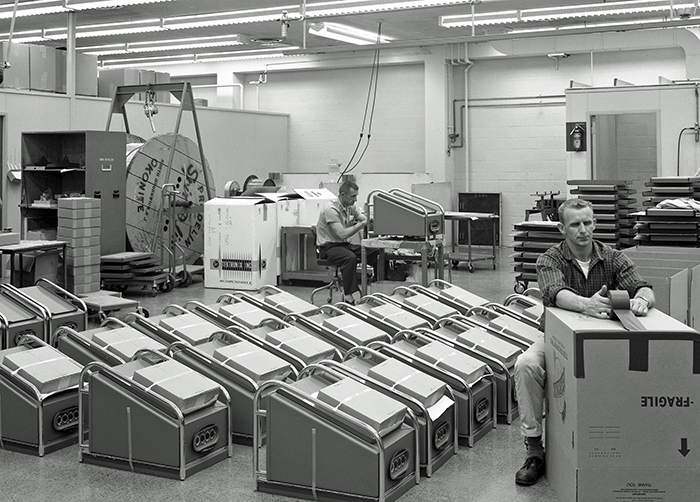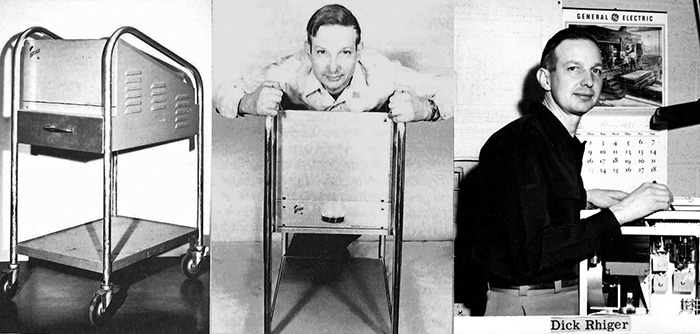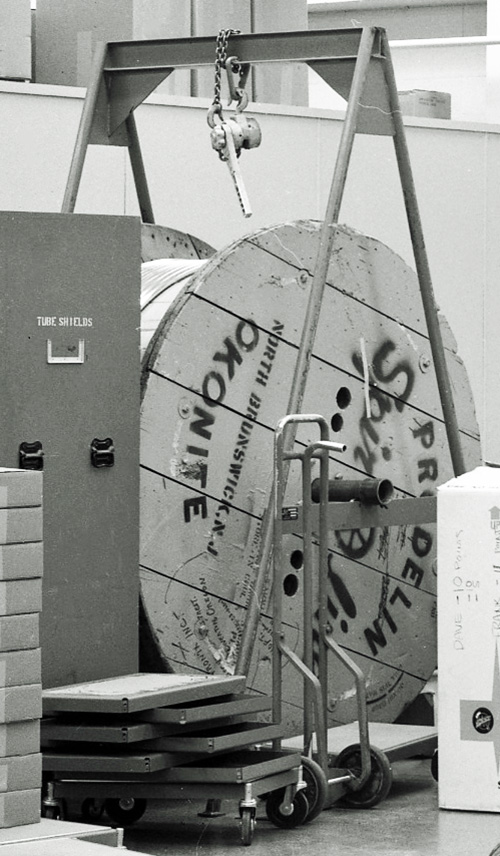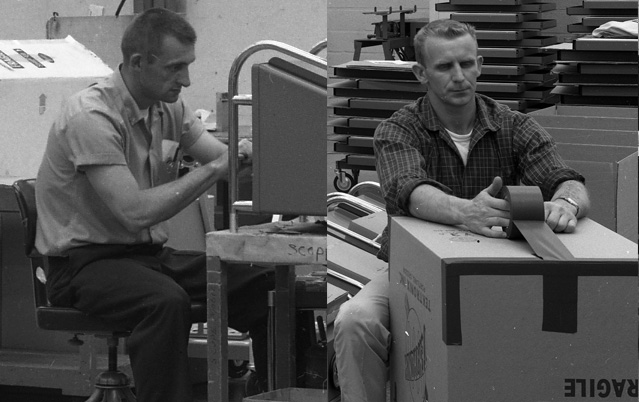R-500 Scope-Mobiles and Spir-o-line
This photo was taken in Building 19 on the Beaverton Campus where we see two unidentified men working to construct and ship R-500 Scope-Mobiles. Except for the rubber-tired wheels, the carts were built entirely from aluminum alloy with the sheet metal finished in the standard crackle-finish gray Tektronix commonly used at the time. The cart came with a convenient drawer–described in the initial sales brochure as “commodious– for storing probes and cables. In the photo the wheels and the lower part of the tube frames are enclosed in the boxes taped to carts, in preparation for shipping.
Dick Rhiger was hired as Tektronix third electrical engineer in 1948, after Howard Vollum and Logan Belleville. In his spare time, Dick worked to develop a cart that would support Tektronix growing line of fairly heavy oscilloscopes and allow them to be easily moved about a laboratory. Marshall Lee’s history of Tektronix, “Winning with People: The First Forty Years of Tektronix” chronicles this history as well as picturing the first prototype and showing Dick Rhiger’s playful demonstration of the strength of the Scope-Mobile.
Introduced in 1949 at $97.50 and weighing 42 pounds, the R-500 was initially advertised as accommodating the Tektronix Type 511, 511-A, 511-AD, 512 and X-513 Cathode Ray Oscilloscopes. “It provides a sturdy yet mobile and therefore highly useful support for the Oscilloscope.” A modified version called the 500/53A was offered with two openings in the front that could be used to store unused plugins. The R-500 series last appeared in the Mid-1965/Mid-1966 edition of the Tektronix Catalog.
A similar Scope-Mobile was included in the purchase price of the 50 MHz type 517, introduced in 1951. Dick Rhiger co-designed the groundbreaking 517 along with Howard Vollum and Logan Belleville.
Note that along the wall in the back of the photo, the wooden spool is from The Okonite Company. That spool contained the delay line used in the Tektronix 1GHz scope, the Type 519. The 519 was introduced in 1959 which also helps to try to date the photo. Remarkably, The Okonite Company was founded in 1878 and is still in business today with its headquarters in Ramsey NJ.
A different version of Spir-o-line was used in the 113 Delay Line product. One of the first jobs for our late museum colleague, Bruce Baur, was to form the Spir-o-line delay lines from these reels.
If you can identify either of these men please contact the museum. A careful look reveals the names Dave, Frank and Greg written on a shipping box toward the back of the photo, but we can’t match those names to anyone in the 1956 or 1958 Employee Photo Albums.




